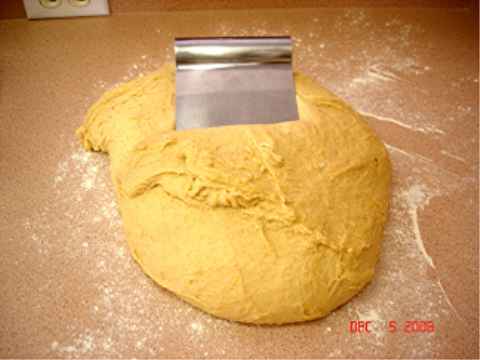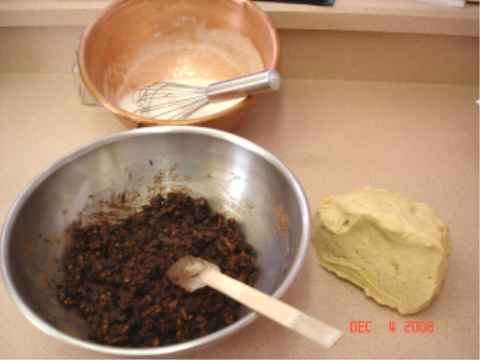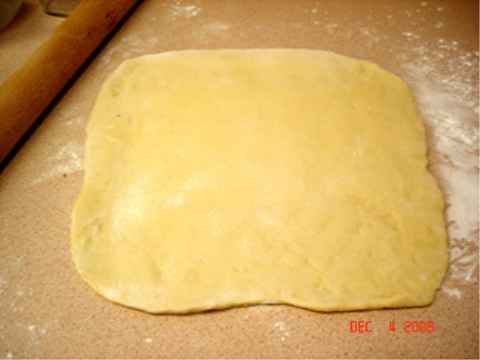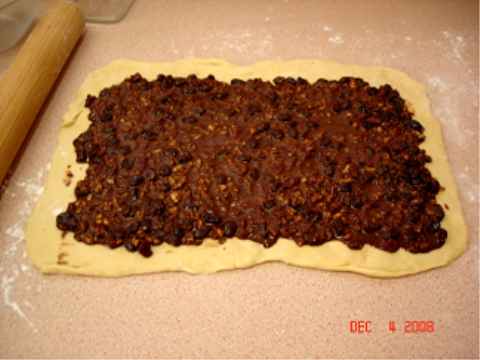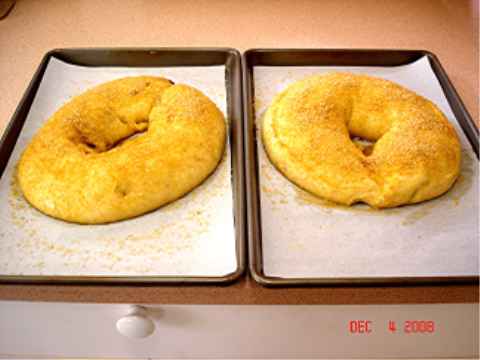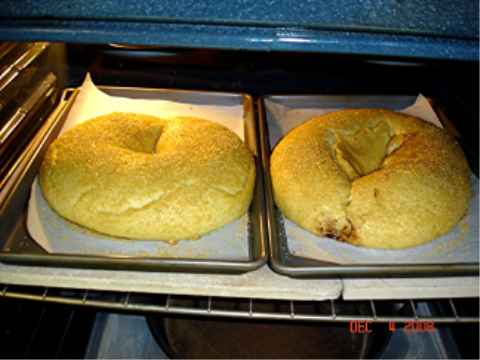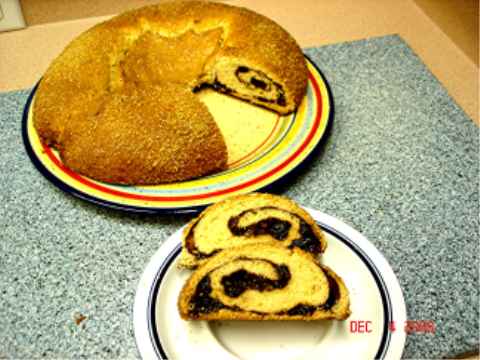This is Michel Suas' recipe/formula for "Rotolo Di Natali" from his book "Advance Bread and Pastry". In the summary at the beginning of the recipe Mr. Suas says: "This ring of dough is usually baked in Italy for Christmas celebrations. The combination of soft enriched dough and crunchy filling creates an unusual texture, while the appealing presentation makes Rotolo Di Natali a festive centerpiece."
I tried to find the origin and story behind this lovely, deliciously filled sweet bread but was unable to do so.
However, years ago I was enrolled at the Dunwoody Institute's prestigious Professional Baking - Racker Certification Program. That same year, through the generous endowment of the Lydia R. and Edgar P. Munnerlyn Charitable Trust, our graduating class was provided steerage tickets on the tramp freighter 'Honduran Gal", thus enabling the members of Dunwoody, class of '78, the opportunity to visit authentic artisan bakeries in Italy as part of Dunwoody's "Meet The Bakers" outreach program.
The Dunwoody "Rackers" had been in Italy for a couple of weeks and our class trip was winding down. It was my last evening in Italy and I was feeling a bit nostalgic about the time I had spent in this wonderful country. The evening was balmy and as I was strolling through the downtown piazza I noticed an elderly man sitting alone on a bench reading his newspaper, the light blue smoke from his short black Pierogi cigar encircling his head, then drifting slowly away into the night air. I decided to approach him, and after we exchanged greetings and made perfunctory small talk, I casually asked him where I could go on my last night in this beautiful city to find the true essence of Italy. Slowly folding his newspaper, he glanced around, making certain we were not being observed, and that no one was within earshot of our conversation. I couldn't help but notice the old man's eyes were misting a bit as he reached into his jacket pocket and pulled out an old and tattered, dog-eared color photo of a beautiful, golden crown shaped loaf of bread, the top liberally sprinkled with coarse sugar creating a golden crispy crust. He proudly held up the photo for me to examine. Grinning, I nodded approvingly and in my fluent Italian I said: "Momma mia, thatsa nice a loafa you gotta there ina you foto"'
Smiling broadly, the old man lightly kissed the photo and carefully tucked it back into his jacket pocket. Then, he motioned me a bit closer and as he leaned forward, a faint smile crossed his lips. The old man spoke very softly, measuring each word, the way Orson Welles had done in Citizen Kane when the camera, in the opening scene focused on his mouth, and his lips spoke the immortal word: "Rosebud". The old man slowly stood up, placing one hand on my shoulder and leaning a bit closer to my ear, he softly whispered: "Rotolo Di Natali".
Since that evening I have wondered about the true meaning of these words? Then recently, after finding Michel Suas' recipe and baking this terrific sweet bread, I understand exactly what the old man meant that night in the piazza.
OK, confession time. There really wasn't any old man on the piazza bench that night in Italy. I made it all up. But seriously, this bread is a very nice European style holiday treat, filled with a mixture of nuts, sugar, cacao powder, raisins, rum and beaten egg whites.
Howard
